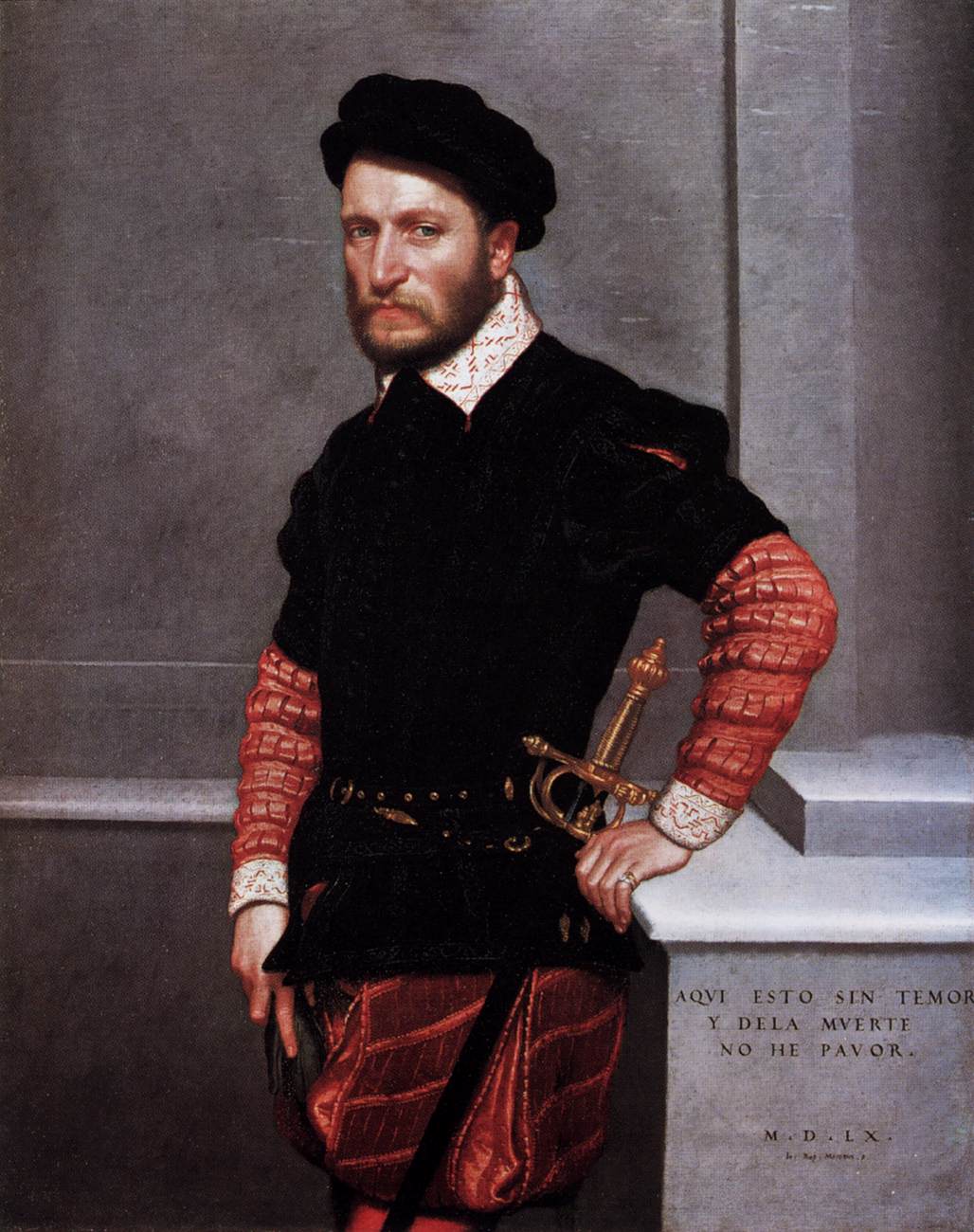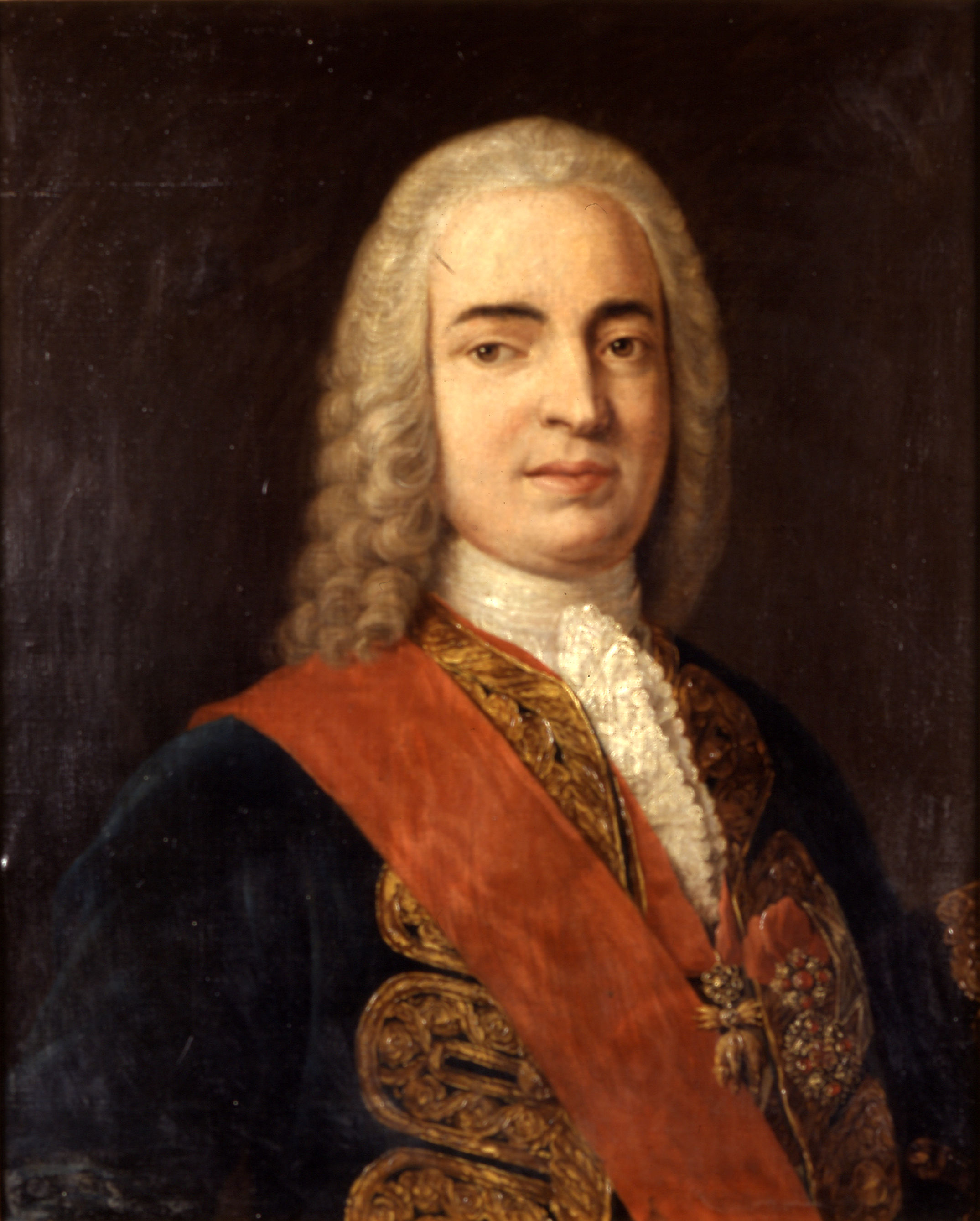|
Marquess Of Navahermosa
Marquess of Navahermosa ( es, Marqués de Navahermosa) is an hereditary title in the Peerage of Spain, granted in 1683 by Charles II to Juan de Feloaga, knight of the Order of Santiago and member of the Council of Finance. Marquesses of Navahermosa (1683) *Juan de Feloaga y Ponce de León, 1st Marquess of Navahermosa (1683-1702) *Francisco de Feloaga y Vargas, 2nd Marquess of Navahermosa (1702-1736) *José de Feloaga y Vargas, 3rd Marquess of Navahermosa (1736-?) *Juan Félix de Feloaga y Vargas, 4th Marquess of Navahermosa (?-1756) *Alejo de Feloaga y López de Zárate, 5th Marquess of Navahermosa (1756-?) *Félix de Feloaga y Gaytán, 6th Marquess of Navahermosa *Manuel de Salabert y Torres, 7th Marquess of Navahermosa (?-1834) *Narciso de Salabert y Pinedo, 8th Marquess of Navahermosa (1834-1885) *Casilda Remigia de Salabert y Arteaga, 9th Marchioness of Navahermosa (1885-1936) * Luis Fernández de Córdoba y Salabert, 10th Marquess of Navahermosa (1952-1956) * Victoria Eug ... [...More Info...] [...Related Items...] OR: [Wikipedia] [Google] [Baidu] |
COA Marquess Of Navahermosa
Coa may refer to: Places * Coa, County Fermanagh, a rural community in County Fermanagh, Northern Ireland * Côa River, a tributary of the Douro, Portugal ** Battle of Coa, part of the Peninsular War period of the Napoleonic Wars ** Côa Valley Paleolithic Art, one of the biggest open air Paleolithic art sites * Quwê (or Coa), an Assyrian vassal state or province from the 9th century BC to around 627 BCE in the lowlands of eastern Cilicia ** Adana, the ancient capital of Quwê, also called Quwê or Coa * Côa (Mozambique), central Mozambique People * Eibar Coa (born 1971) Other uses * Coa de jima, or coa, a specialized tool for harvesting agave cactus * Continental Airlines, major US airline * c.o.a., coat of arms * Coa (argot) ( es), criminal slang used in Chile See also * COA (other) * ''Coea'', a genus of butterflies * ''Coua Couas are large, mostly terrestrial birds of the cuckoo family, endemic to the island of Madagascar. Couas are reminiscent of African ... [...More Info...] [...Related Items...] OR: [Wikipedia] [Google] [Baidu] |
Charles II Of Spain
Charles II of Spain (''Spanish: Carlos II,'' 6 November 1661 – 1 November 1700), known as the Bewitched (''Spanish: El Hechizado''), was the last Habsburg ruler of the Spanish Empire. Best remembered for his physical disabilities and the War of the Spanish Succession that followed his death, Charles's reign has traditionally been viewed as one of managed decline. However, many of the issues Spain faced in this period were inherited from his predecessors and some recent historians have suggested a more balanced perspective. For reasons that are still debated, Charles experienced extended periods of ill health throughout his life and from the moment he became king at the age of three in 1665, the succession was a prominent consideration in European politics. Historian John Langdon-Davies summarised his life as follows: "Of no man is it more true to say that in his beginning was his end; from the day of his birth, they were waiting for his death". Despite this, his successors inhe ... [...More Info...] [...Related Items...] OR: [Wikipedia] [Google] [Baidu] |
Spanish Nobility
Spanish nobles are persons who possess the legal status of hereditary nobility according to the laws and traditions of the Spanish monarchy and historically also those who held personal nobility as bestowed by one of the three highest orders of knighthood of the Kingdom, namely the Order of the Golden Fleece, the Order of Charles III and the Order of Isabella the Catholic. A system of titles and honours of Spain and of the former kingdoms that constitute it make up the Spanish nobility. Some nobles possess various titles that may be inherited, but the creation and recognition of titles is legally a prerogative of the King of Spain. Many noble titles and families still exist which have transmitted that status since immemorial nobility, time immemorial. Some aristocratic families use the nobility particle, nobiliary particle ''de'' before their family name, although this was more prominent before the 20th century. During the rule of ''Generalísimo'' Francisco Franco, some new here ... [...More Info...] [...Related Items...] OR: [Wikipedia] [Google] [Baidu] |
Order Of Santiago
The Order of Santiago (; es, Orden de Santiago ), is a religious and military order founded in the 12th century. It owes its name to the Patron Saint of Spain, "Santiago" ( St. James the Greater). Its initial objective was to protect the pilgrims on the Way of St. James, to defend Christendom and to remove the Muslim Moors from the Iberian Peninsula. Entrance was not however restricted to nobility of Spain exclusively, and many members have been prominent Catholic Europeans in general. The Order's insignia is particularly recognisable and abundant in Western art. After the death of the Grand Master Alonso de Cárdenas in 1493, the Catholic Monarchs incorporated the Order into the Spanish Crown. Pope Adrian VI forever united the office of grandmaster of Santiago to the crown in 1523. The First Republic suppressed the Order in 1873 and, although it was re-established in the Restoration, it was reduced to a nobiliary institute of honorable character. It was ruled by a Superior C ... [...More Info...] [...Related Items...] OR: [Wikipedia] [Google] [Baidu] |
Ministry Of Finance (Spain)
The Ministry of Finance or Ministry of Treasury (MH) is the department of the Government of Spain responsible for planning and carrying out the government policy on public finance and budget. It applies and manages the regional and local financing systems and the provision of information on the economic-financial activity of the different Public Administrations. The Finance Ministry also manages the cadastre and collects all the State taxes through the Agencia Tributaria as well as controlling the state-owned enterprises through the State Company of Industrial Participations (SEPI). Likewise, the MH manages the central government goods, the European funds and the public lottery. However, most of its duties are carried out by autonomous agencies like the Tax Agency and the Royal Mint. The MH is headed by the Minister of Finance, who is appointed by the King of Spain at request of the Prime Minister. The Minister is assisted by three main officials, the Secretary of State for ... [...More Info...] [...Related Items...] OR: [Wikipedia] [Google] [Baidu] |
Luis Fernández De Córdoba, 17th Duke Of Medinaceli
Luis Jesús Fernández de Córdoba y Salabert, 17th Duke of Medinaceli, GE (16 January 1880 – 13 July 1956), was a Spanish nobleman and distinguished hunter. He was born the world's most titled person since his father, the 16th Duke, had died months before in a hunting accident. He was 11 times a duke, 17 a marquess, 15 a count and 4 a viscount. Early life Born as the only son of the 16th Duke of Medinaceli, Luis María Fernández de Córdoba y Pérez de Barradas, and his second wife Casilda Remigia de Salabert y Arteaga, 9th Marchioness of Torrecilla. He was baptised the day after his birth in the parish church of San Luis Obispo of Madrid. He was born posthumously to his father, who had died in a hunting accident some months earlier and as such he assumed the historical titles of the House of Medinaceli from birth. His mother, who would become the 11th Duchess of Ciudad Real in her own right, remarried the politician Mariano Fernández de Henestrosa, 1st Duke of Santo Maur ... [...More Info...] [...Related Items...] OR: [Wikipedia] [Google] [Baidu] |
Victoria Eugenia Fernández De Córdoba, 18th Duchess Of Medinaceli
''Don (honorific), Doña'' Victoria Eugenia Fernández de Córdoba y Fernández de Henestrosa, 18th Duchess of Medinaceli, Grandee of Spain (; 16 April 1917 – 18 August 2013) was the 18th Duke of Medinaceli, Duchess of Medinaceli in her own right and a Grandee of Spain, head of the Spanish noble House of Medinaceli and patron of the Ducal House of Medinaceli Foundation. She died in Seville on 18 August 2013, aged 96. Background Doña Victoria was born as the eldest daughter of Don Luis Fernández de Córdoba, 17th Duke of Medinaceli, Luis Jesús Fernández de Córdoba y Salabert, 17th Duke of Medinaceli, and Doña Ana María Fernández de Henestrosa y Gayoso de los Cobos. She married Rafael de Medina y Vilallonga in 1938, and she succeeded to the dukedom in 1956, upon her father's death. Before that, she was styled as 16th Duchess of Alcalá de los Gazules, a courtesy title granted by her father. She was the most titled Spanish nobility, noblewoman in Spain, and holder of one of ... [...More Info...] [...Related Items...] OR: [Wikipedia] [Google] [Baidu] |
Duke Of Ciudad Real
Duke of Ciudad Real ( es, Duque de Ciudad Real) is a hereditary title in the Peerage of Spain accompanied by the dignity of Grandee, granted in 1613 by Philip III to Alonso de Idiázquez, 1st Count of Aramayona and Viceroy of Navarre. Contrary to common belief, the title makes reference to the municipality of Cittareale in the province of Rieti, and not to the city of Ciudad Real in Spain. The first duke was granted fiefdom over Cittareale in the Kingdom of Naples, hence the translation in Spanish to "Ciudad Real". Dukes of Ciudad Real (1613) * Alonso de Idiázquez y Butrón, 1st Duke of Ciudad Real * Juan Alonso de Idiázquez y Butrón, 2nd Duke of Ciudad Real * Francisco Alonso de Idiázquez y Álava, 3rd Duke of Ciudad Real * Francisco de Idiázquez y Borja, 4th Duke of Ciudad Real * Juana María de Idiázquez y Borja, 5th Duchess of Ciudad Real * María Antonia Pimentel e Idiázquez, 6th Duchess of Ciudad Real * Ana María de Orozco y Villela, 7th Duchess of Ciudad Real ... [...More Info...] [...Related Items...] OR: [Wikipedia] [Google] [Baidu] |
Marquesses Of Spain
A marquess (; french: marquis ), es, marqués, pt, marquês. is a nobleman of high hereditary rank in various European peerages and in those of some of their former colonies. The German language equivalent is Markgraf (margrave). A woman with the rank of a marquess or the wife (or widow) of a marquess is a marchioness or marquise. These titles are also used to translate equivalent Asian styles, as in Imperial China and Imperial Japan. Etymology The word ''marquess'' entered the English language from the Old French ("ruler of a border area") in the late 13th or early 14th century. The French word was derived from ("frontier"), itself descended from the Middle Latin ("frontier"), from which the modern English word ''march'' also descends. The distinction between governors of frontier territories and interior territories was made as early as the founding of the Roman Empire when some provinces were set aside for administration by the senate and more unpacified or vulnerabl ... [...More Info...] [...Related Items...] OR: [Wikipedia] [Google] [Baidu] |
Lists Of Spanish Nobility
A ''list'' is any set of items in a row. List or lists may also refer to: People * List (surname) Organizations * List College, an undergraduate division of the Jewish Theological Seminary of America * SC Germania List, German rugby union club Other uses * Angle of list, the leaning to either port or starboard of a ship * List (information), an ordered collection of pieces of information ** List (abstract data type), a method to organize data in computer science * List on Sylt, previously called List, the northernmost village in Germany, on the island of Sylt * ''List'', an alternative term for ''roll'' in flight dynamics * To ''list'' a building, etc., in the UK it means to designate it a listed building that may not be altered without permission * Lists (jousting), the barriers used to designate the tournament area where medieval knights jousted * ''The Book of Lists'', an American series of books with unusual lists See also * The List (other) * Listing (di ... [...More Info...] [...Related Items...] OR: [Wikipedia] [Google] [Baidu] |





.jpg)